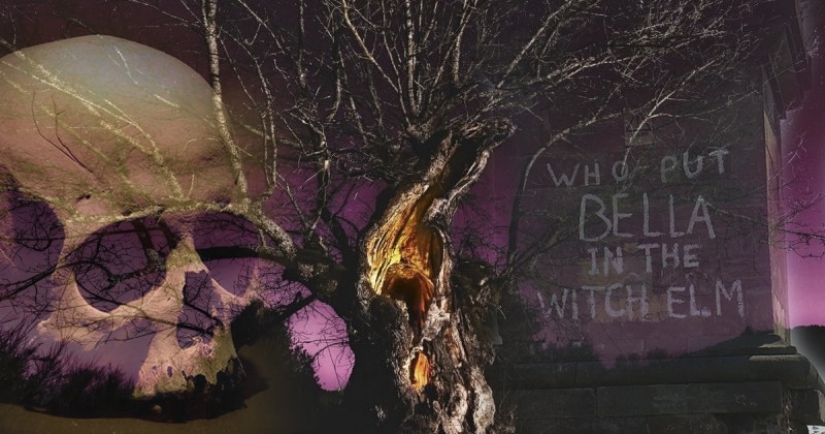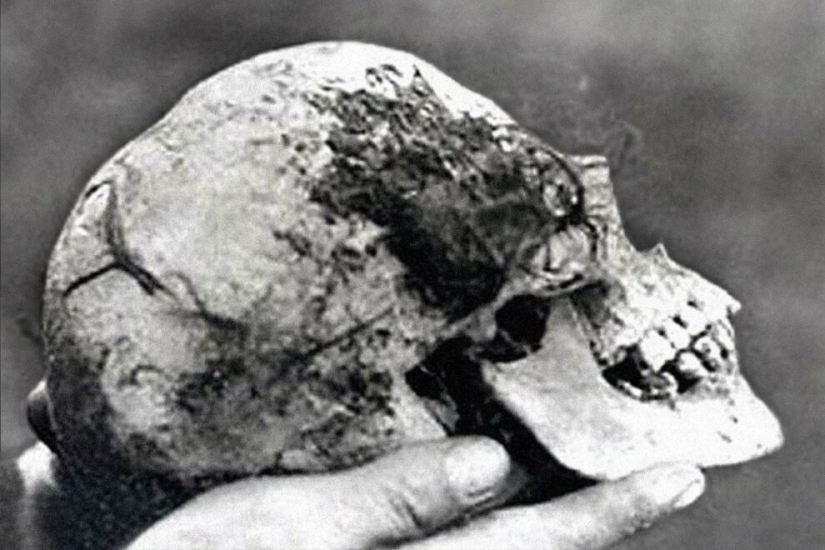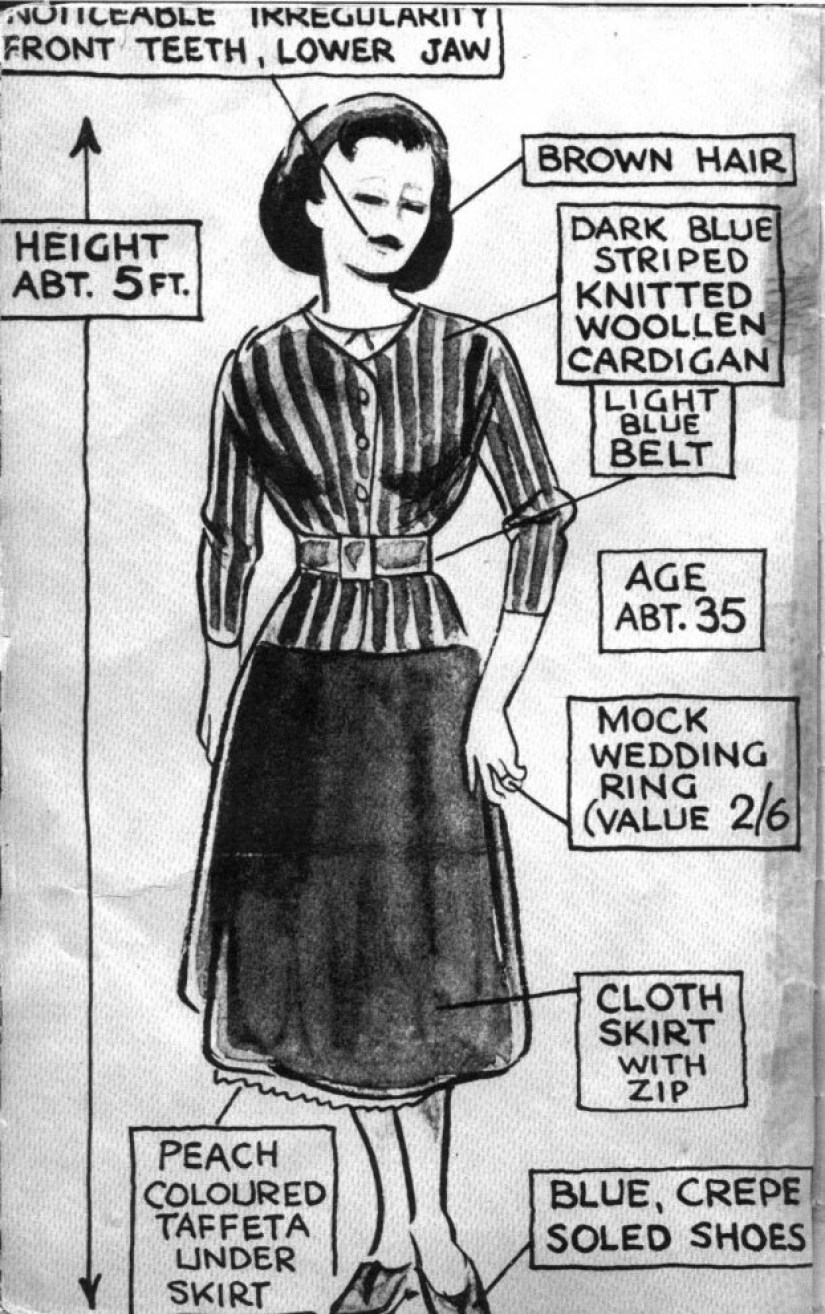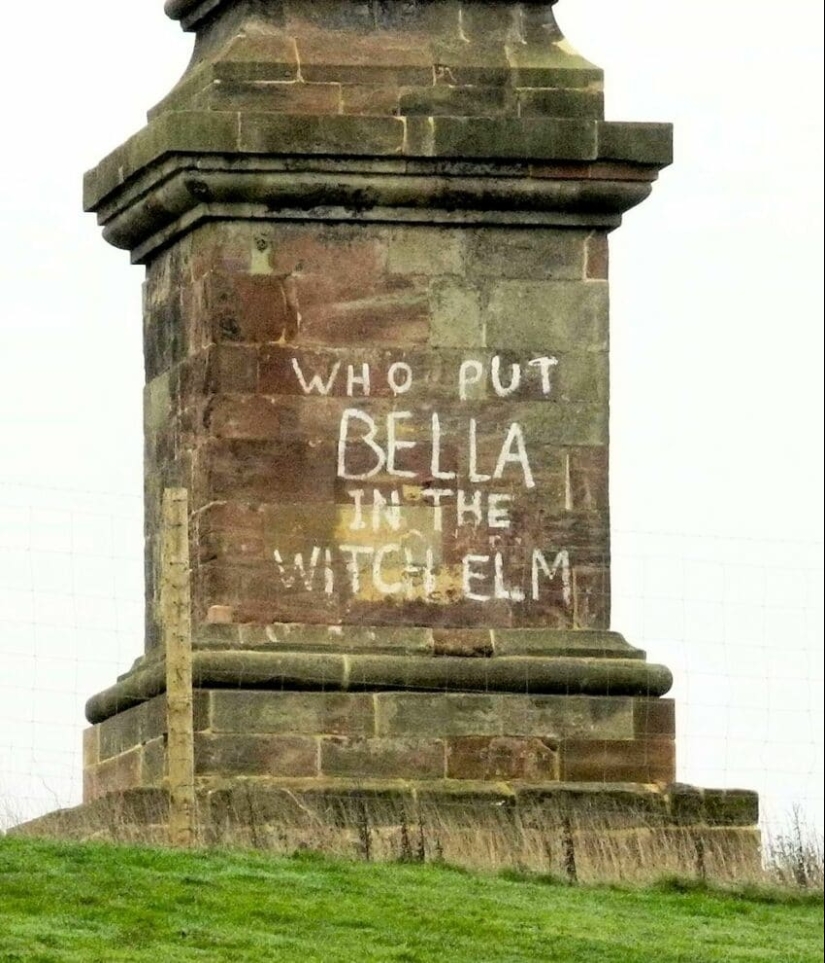Who put Bella in the Witch's Elm? Britain's Most Mysterious Crime
Categories: History
By Pictolic https://pictolic.com/article/who-put-bella-in-the-witchs-elm-britains-most-mysterious-crime.htmlWhen it comes to unsolved crimes, they usually mean different things. In addition to the identity of the attacker, there may be an unknown victim, the motive for the murder, the weapon and the crime scene have not been determined. But it also happens that the case consists of some riddles. An example of this is a strange murder that occurred in the West of England at the height of the Second World War. For almost 80 years, which have passed since the discovery of the body, the police have not advanced a step in the investigation.

On April 18, 1943, four schoolchildren went for a walk in the private forest of Hagley Wood. This place has enjoyed a bad reputation among the locals for centuries, because it was considered a habitat for witches and other evil spirits. In the center of the thicket, located on the estate of Lord Cobham, there was an old ugly elm.
The tree, which was called the Witch Elm, stood in the forest for centuries. Many considered him the ugliest in the UK. It wasn't tall, but it was sprawling and looked like a clump of hair from the outside. The elm tree was the target of a hike by teenagers who were going to look for bird eggs in its crown.

One of the boys, Bob Farmer, volunteered to climb an elm tree and look for nests in its dense branches. He quickly climbed up the huge trunk and almost disappeared between the branches. The guy saw that he was climbing for a reason – there was something white in the hollow located right in the center of the trunk. To Bob's horror, he pulled out not a bird's nest, but a human skull with crooked teeth and a piece of hair.
Farmer screamed, threw the skull back into the hollow and hurried down to his comrades. After discussing the terrible find, the guys decided not to tell anyone about it. It wasn't just the fact that they would have to communicate with the police that bothered them. The prospect of a showdown with Sir Cobham, the owner of Hagley Wood, was not very attractive. The elderly gentleman reacted extremely painfully to the violation of the boundaries of his estate. Simply put, it could have ended in a beating and even a fine.
But the children managed to keep the secret of the Witch Elm for only a few hours. The youngest boy, Tommy Willetts, couldn't stand it and told his parents everything at dinner. They immediately turned to the police and the next day a solid company gathered near the oak tree. In the presence of the owner of the forest, the police climbed an elm tree and found there first the same skull, and then the skeleton without an arm. The limb was soon found not far from the elm tree on the ground, under a layer of last year's leaves.

The remains were rushed to Birmingham, the nearest major city. There they were studied by an experienced specialist - forensic scientist Professor James Webster. The beginning of the examination of the skeleton was promising. The scientist found that it belonged to a miniature woman no taller than 152 cm, about 35 years old, who died a year and a half before the discovery, most likely by violent death.
The woman had mouse-colored hair, and she also gave birth to one child. The remnants of clothing on the body indicated that she was not rich. This was confirmed by the terrible, crooked teeth. One of the front ones bulged forward so much that, most likely, it was visible even with closed lips. The deceased had a cheap gold-plated wedding ring on her finger, and a piece of cloth, possibly used as a gag, was clamped in her teeth.
The cheap shoes of the lady were made in the workshop of the town of Dudley, which is 18 km from Birmingham. The master who sewed the shoes was found quickly, but he traded it in the market and did not always know his customers. A survey of Dudley residents also did not give anything to the investigation – the portrait of a woman painted by the artist and descriptions of her clothes did not tell anyone anything. So this modest thread broke.

Webster determined that the unknown lady got into the hollow of the elm tree alive or immediately after death. Despite the smallness of the woman, after rigor mortis, her body could hardly be shoved into a narrow hollow. As for the severed arm, the professor could not say how it happened. The hand could be separated immediately after death or later pulled out of the hollow by wild animals.
The mysterious crime has become a matter of honor for the local police. Thousands of residents of Birmingham, Dudley and surrounding villages were interviewed. We checked all the train stations, clothing stores and ladies' jewelry. But at the stations they could not remember such a person, and no one identified the wedding ring and scraps of fabric. The case, which was thundering all over the West of England, gradually stalled.
This story was continued eight months later - on Christmas Day, 1944. An inscription in paint appeared on the wall of one of the houses in Birmingham: "Who put Bella in the witch's elm?". A few days later, the same question was discovered on the ancient obelisk of Hagley, once erected in honor of the ancestors of Lord Cobham.
Was it hooliganism or did the unknown author know something? Why did he call the woman Bella–was that her real name? Why was the inscription on the obelisk, maybe the owner of the forest is involved in the case? Questions came up one after another, but there were no answers to them.

It was also unusual that Lord Cobham forbade erasing the inscription from the obelisk. The aristocrat said that it could damage the monument. A few years later, during the restoration, the inscription was still removed, but it reappeared. After that, he was not touched. The phrase "Who put Bella in the witch's elm?" was then written many more times in different parts of Birmingham, and then in other cities.
Over time, this phrase turned into a popular graffiti plot, a kind of business card of the counterculturists of Birmingham. The inscriptions can still be seen in this city, although utilities are trying to remove them immediately. Until 1999, among the numerous graffiti there was a recognizable handwriting of the original.
Of course, in the decades since the discovery of the body, many versions of the crime have appeared. The first recognition was made in 1953 by a woman named Una Massop. She told the police that her late husband, Jack, had confessed to his involvement in Bella's death a few years ago.

He told his wife that when he was vacationing with a friend named van Ralt in a pub, he met a prostitute Bella. The men decided to have fun, gave a new acquaintance ale and took her home to van Ralt. But on the way, the prostitute fell asleep soundly and the idea arose in the heads of the men to make fun of her. They carried Bella to the Witch's Elm Tree and shoved the sleeping woman into the hollow.
According to Una, her husband was haunted by nightmares until his death – a woman looked at him in a dream through the branches of an elm tree and called his name. The police took this story skeptically, since Jack Massop suffered from a mental disorder. Moreover, at the time of the murder, he had been "resting" in a psychiatric clinic for almost a year under the reliable care of orderlies.
There was another plausible version – espionage. During the war, several carefully camouflaged military factories were located near Birmingham. In this area, German spies were caught more than once, trying to determine the coordinates of objects for an air bomb attack.
On August 15, 1941, another German spy, Joseph Jacobs, was shot in the Tower of London. Before his death, he said that after him, the Nazis planned to throw another intelligence officer into Western England – his wife Clara Bauerl. Perhaps something went wrong and Clara died herself or was killed?

This excellent version also did not suit the investigation. British agents from MI5 had a photo of Clara, who turned out to be a blonde, beautiful 180 cm tall German woman with perfect teeth. Further verification revealed that Clara died in Germany in 1942. There is a possibility that it was another female agent, but it is impossible to verify this.
It is quite clear that there were various mystical explanations of the crime. Someone suggested that Bella was killed during a magical ritual. It was quite plausible, given the fame of the Witch's Oak. But this version also remained unconfirmed.
Perhaps now, when police experts use DNA tests in investigations, it would be possible to determine Bella's identity. But the skeleton of the Witch Elm woman, as well as other evidence in this case, was lost. Important evidence and the remains of the woman disappeared shortly after the death of Professor Webbster, who had studied them for many years. So we are unlikely to find out who killed Bella and put her in the hollow of a strange tree.
Recent articles

Dangerous products for humans can not always be distinguished by their appearance and even taste. "Drunk" honey looks like ordinary ...

In the middle Ages cats suffered a great deal from Catholics. They were burned and tortured, thrown behind bars and into the fire, ...

Children are not toys, but some babies look a lot like their dolls. Just like twins! Which child do you think is most like their toy?